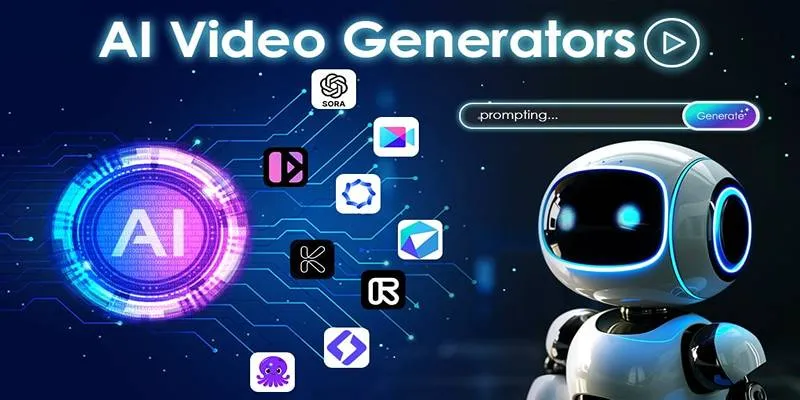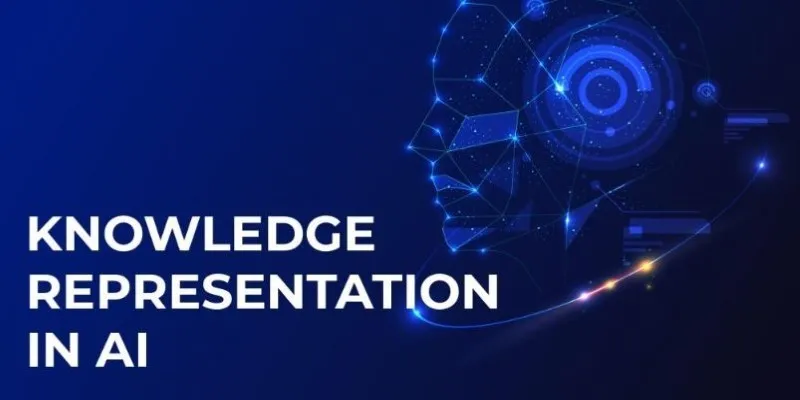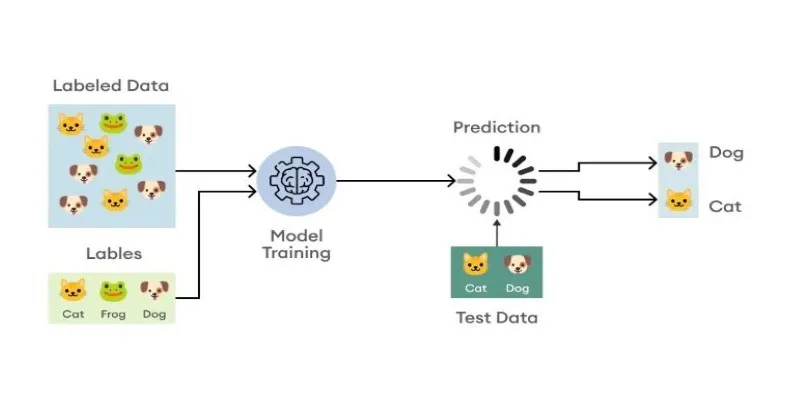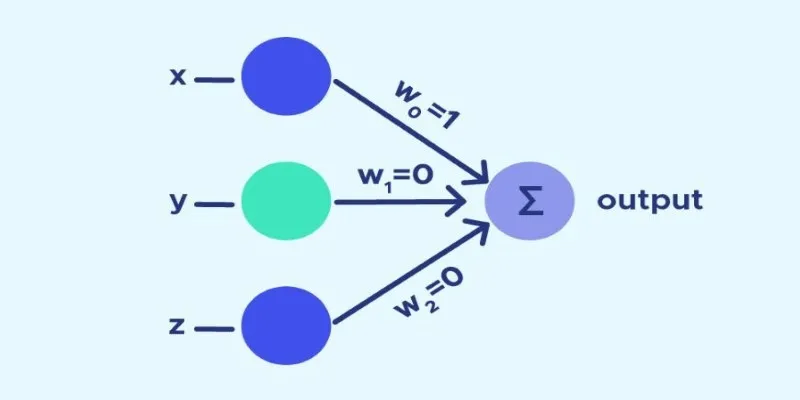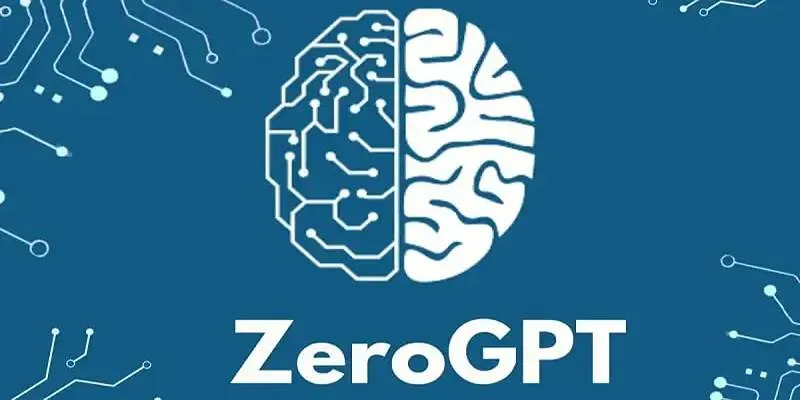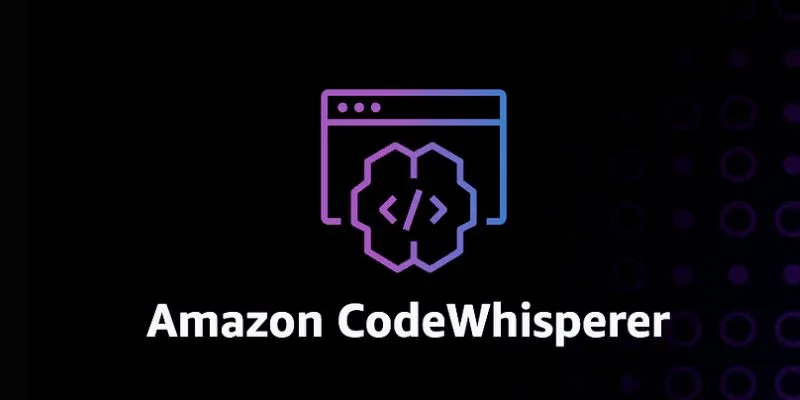JavaScript has long been the dominant language in web development, but its potential extends far beyond that. In 2025, using JavaScript for machine learning (ML) is a trend you can’t afford to miss. JavaScript’s adaptability and widespread acceptance make it the ideal language for ML applications. While Python has traditionally led the way, JavaScript is rapidly gaining ground with robust tools and frameworks, enabling developers to create and train ML models efficiently.
Thanks to advancements in JavaScript-based ML tools like TensorFlow.js and Brain.js, ML capabilities are now accessible directly in Node.js and browser environments. Given the growing edge computing and real-time artificial intelligence trends, JavaScript offers unique advantages. This article will explore why 2025 is the prime time to delve into JavaScript for machine learning and how it can transform your approach.

**Why 2025 is the Perfect Year to Leverage JavaScript for Machine
Learning?**
Here’s why 2025 is the ideal year to use JavaScript for machine learning and its expanding features:
The Rise of JavaScript for Machine Learning
The growing significance of JavaScript in machine learning is no accident. Its evolution over the years has positioned it as a valuable tool for developers across various fields. JavaScript has become a viable option for building and deploying ML models with frameworks like TensorFlow.js and ML5.js. The versatile language supports deep learning, data processing, and real-time artificial intelligence applications. By 2025, JavaScript has advanced to the point where developers don’t need to rely solely on languages like Python for machine learning tasks. TensorFlow.js and other libraries enable machine learning models to run directly in the browser, opening up exciting new possibilities for user-facing projects.
Real-Time Applications Powered by JavaScript
JavaScript’s ability to power real-time applications is one of the key reasons for its adoption in machine learning in 2025. Applications requiring rapid data processing and decision-making find JavaScript’s asynchronous nature and event-driven architecture ideal. Whether it’s real-time object detection in videos or a live recommendation engine, JavaScript handles these tasks seamlessly. Libraries like Brain.js allow developers to build neural networks in real time, creating intelligent applications that respond to changing inputs. This capability is particularly valuable in finance, healthcare, and e-commerce, where quick decisions and actions are crucial. JavaScript enables the creation of ML models that update and adapt to new data without requiring server-side configuration.
Edge Computing and JavaScript’s Role
Edge computing is becoming a fundamental component of modern applications, and JavaScript plays a critical role. Instead of relying on centralized servers, edge computing involves processing data closer to the source. JavaScript is vital for edge computing because it allows machine learning models to run on devices such as smart cameras, IoT devices, and smartphones. Frameworks like TensorFlow.js enable developers to deploy machine learning models to edge devices, reducing latency and enabling more efficient processing. As more devices become capable of running complex ML models, this trend is expected to grow in 2025. Edge computing powered by JavaScript is transformative for industries relying on real-time, data-intensive applications.

JavaScript for Democratizing Machine Learning
One of the most exciting aspects of using JavaScript for machine learning in 2025 is its potential to democratize access to artificial intelligence and machine learning. Many developers are already familiar with JavaScript, whereas Python may present a steeper learning curve for newcomers. Its widespread popularity in web development means that many developers are already proficient in JavaScript. The simplicity and ease of use of JavaScript make it an ideal starting point for those looking to enter the world of machine learning. With the right tools and frameworks, anyone can begin experimenting with ML models in their web applications without extensive knowledge of complex mathematics or algorithms. JavaScript’s accessibility makes it an excellent tool for experimentation, learning, and even small-scale machine-learning projects.
The Ecosystem and Community Support
The extensive ecosystem and community support surrounding JavaScript are additional factors to consider for machine learning in 2025. JavaScript developers have access to a wealth of resources, including tutorials, forums, and tools for learning about machine learning concepts and best practices. JavaScript’s community-driven nature has always been one of its greatest strengths, and the development of ML-specific libraries only enhances this advantage. Tools like TensorFlow.js boast a vibrant and growing community that contributes to the library’s improvement. JavaScript’s ML ecosystem provides all the necessary resources for getting started with machine learning, from pre-trained models to user guides. Leveraging JavaScript’s ecosystem allows developers to effortlessly incorporate machine learning into their projects, quickly finding solutions to challenges and consulting experienced ML practitioners.
JavaScript’s Integration with Other Technologies
JavaScript’s seamless integration with other technologies will make it even more appealing for machine learning in 2025. JavaScript can connect and orchestrate various components of a machine learning pipeline, from databases to APIs to cloud services. Because JavaScript can interface with other languages like Python and R, developers can leverage the best tools for each stage of the machine learning process. For instance, TensorFlow.js can run the model on the browser, while data preparation can be performed in Python. This interoperability ensures that developers can maximize the strengths of each language while primarily utilizing JavaScript as the foundation for deployment.
Reducing Infrastructure Costs
Running machine learning models on centralized servers or cloud infrastructure can be costly, but JavaScript offers a solution. It allows developers to run models directly on local devices or in the browser, significantly reducing infrastructure expenses. This is particularly beneficial for small businesses or startups that may not have the resources to maintain expensive cloud-based ML solutions. By offloading computation to client-side devices, JavaScript enables more cost-effective machine learning solutions. Additionally, this approach reduces the need for powerful servers and associated energy consumption, making it a more environmentally friendly option for ML applications.
Conclusion:
By 2025, JavaScript has emerged as a powerful tool for machine learning. Its flexibility, ease of use, and expanding ecosystem of ML libraries make it ideal for developers looking to create intelligent applications. JavaScript offers unique advantages for machine learning, from edge computing and real- time processing to democratizing access to artificial intelligence. As the demand for artificial intelligence continues to grow, using JavaScript for machine learning will help developers stay ahead of the curve. If you haven’t already, this year is the perfect time to start incorporating JavaScript into your ML projects and fully capitalize on its potential.
 zfn9
zfn9


